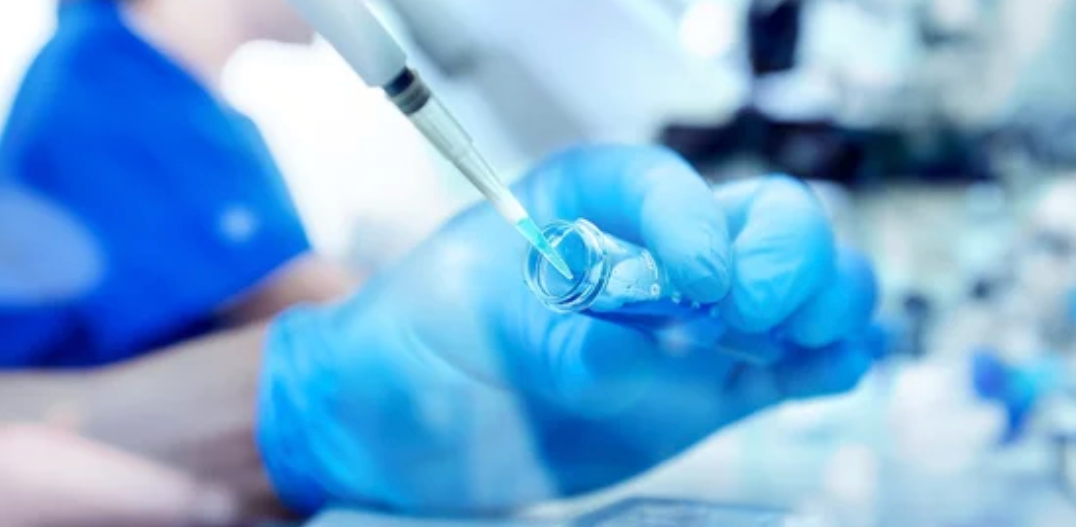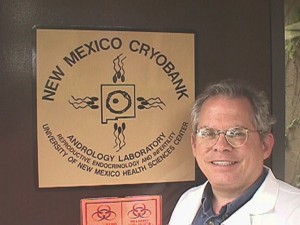
New Mexico Cryobank and Andrology Lab (Roosters)
New Mexico Cryobank and Andrology Lab
I love to do research, and IVOS helps to make my work enjoyable,” says Donald Thompson, Supervisor and Research Scientist of the New Mexico Cryobank and Andrology Lab. Don holds two patents in Fluorescent in Situ Hybridization that redefine the kinetics of DNA denaturation and processing. “I want to raise the bar of knowledge on male infertility and try to answer those questions that are unknown.”
In conjunction with the University’s Biology Department, Don is conducting a non-human study – researching roosters to see if there is a difference in sperm quality between the dominant rooster versus the subdominant roosters in a flock. “Hens choose to mate with the dominant rooster in the flock based on the size of his comb. (Size matters!) Hens better nourish eggs that were inseminated by dominant roosters. We are looking into rooster ornamentation and breeding selection to determine if there is a difference in sperm quality between the dominant rooster and the subdominant rooster in a flock. Because of its flexibility across animal platforms, IVOS is used in this project to establish testing parameters peculiar to roosters.”
In his job, Don performs tests such as looking for anti-sperm antibodies. “The body makes antibodies against its own sperm,” Don says, “and the sperm stick together. IVOS shows this clearly. Also, I make leukocyte determinations. Leukocytes are a type of white blood cell that look like immature sperm cells. By observing them in IVOS, I can identify large round cells that may be leukocytes. I then perform a fluorescent anti-body test to determine if they really are leukocytes.”
Impending approval and funding will allow him to study the natural history of the human papilloma virus (HPV). HPV is a sexually transmitted disease, and two components of the virus, HPV 16 and HPV 18, are known sources of cervical cancer in women. HPV exists in the environment, and, according to Don, “the study is designed to trace how and when the virus initially shows up in a male. IVOS will play a part in this research by identifying sperm with structural deformities and morphological abnormalities and by allowing me to correlate IVOS data with data known about HPV.”
He also plans to investigate Y chromosome microdeletions. “In some men,” he explains, “parts of DNA are deleted on the long arm of the Y chromosome, causing sperm production anomalies. Diseases result, which are passed genetically to sons. By observing sperm with IVOS, I can identify questionable sperm and do further tests so the client can make an informed decision about proceeding with insemination.”

Department of OB/GYN, Division of Reproductive Endocrinology and Infertility Health Sciences Center, University of New Mexico
Albuquerque, New Mexico USA
Don first started using IVOS three years ago. About upgrading his system he says, “The difference between Versions 10 and 12 is the incredible speed. IVOS now counts 10 fields in the time it took Version 10 to count one field. And it’s so easy to use. I was able to show my assistant, Chris Bowden, how to use it in 10 minutes.” When Don shipped the system to Hamilton Thorne for the Version 12 upgrade, he had to go back to the manual counting method. “That was very difficult,” he says. “I rely on IVOS for so much of my work.”
“The people at Hamilton Thorne are down to earth and easy to work with. Someone is always available. Our relationship is personal and effortless, the kind of customer relationship that everyone wants. IVOS leaves no question unanswered. It’s the only system I would use.”
Donald Thompson, Supervisor, Research Scientist II
If you have any questions you’d like to ask Don Thompson, he’ll be happy to answer them. You can reach him at (505) 272-3912 or email him at cmenking [AT] salud [DOT] unm [DOT] edu.
